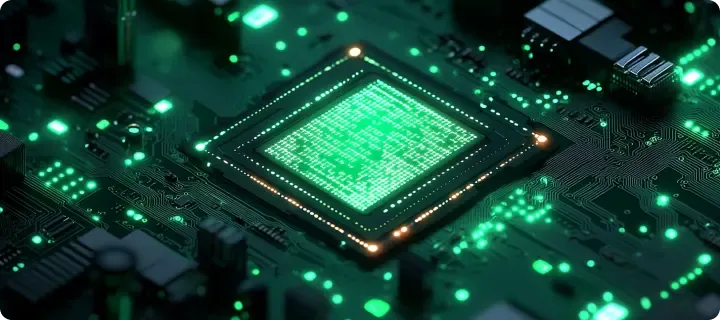Dash, short for “digital cash”, is a cryptocurrency designed to make payments fast, private, and affordable. Created in 2014, Dash addresses troubles that Bitcoin faces, which include gradual transaction speeds and high costs. With Dash, customers can send cash everywhere inside the global inside seconds, presenting a realistic solution for both people and businesses. Unlike conventional payment systems, Dash operates without the want for banks, depending as an alternative on blockchain technology for stable and direct transactions.
Dash’s unique features make it stand out inside the crowded cryptocurrency area. It focuses on actual-world usability, presenting gear that cater to ordinary financial desires. This Dash guide explains what is Dash crypto, the way it works, and why it has emerge as a famous choice for virtual bills. Whether you’re new to cryptocurrency or an experienced user, Dash gives a person-pleasant solution for current transactions.
The origins of Dash (DASH)
Dash was created by using Evan Duffield in 2014 with the intention of enhancing Bitcoin’s functionality. Initially released as “XCoin”, it was rebranded as “Darkcoin” earlier than adopting the call Dash in 2015. The new name, a mixture of “digital” and “cash”, reflects its assignment to serve as an clean-to-use cryptocurrency for regular payments.

Evan Duffield, an skilled software developer, aimed to solve Bitcoin’s shortcomings, such as its lack of privateness and slow transaction times. He added the X11 set of rules, a completely unique machine that complements protection while decreasing energy consumption all through mining. This innovation made Dash greater handy to a much broader audience, along with miners and customers in areas in which financial systems are less solid. Over the years, it has become a depended on price option, specially in regions like Latin America, where conventional monetary services are unreliable. For those wondering what is Dash crypto, it is a digital currency that emerged as a practical alternative to Bitcoin, offering enhanced privacy, speed, and accessibility.
Dash’s adaptability has contributed to its success. By presenting advanced capabilities like on the spot transactions and privateness equipment, it has positioned itself as a pacesetter inside the cryptocurrency area. Today, Dash is used globally by way of individuals and groups for steady, fast, and coffee-fee transactions. If you’re answering what is Dash crypto, this Dash guide is a terrific starting point to examine greater about its evolution and adoption.
How does Dash (DASH) work?
Currency operates on a -tier blockchain community, which units it aside from many different cryptocurrencies. The first tier consists of miners who verify transactions and secure the blockchain. These miners make certain that each one transactions are legitimate and nicely recorded, much like in Bitcoin’s network. However, Dash takes this a step similarly with its 2nd tier.

The second tier is powered by means of masternodes, specialized servers that manage advanced features. These include InstantSend, which lets in transactions to be confirmed in under seconds, and PrivateSend, which complements privateness through mixing transactions to difficult to understand their beginning. To run a masternode, a person need to keep 1,000 Dash as collateral. This gadget guarantees that masternodes act within the exceptional hobby of the network while imparting additional capability.
Dash’s InstantSend is especially precious for actual-time payments, along with buying items in shops or sending cash fast to friends and own family. PrivateSend, however, offers a layer of anonymity that many customers find attractive. By mixing transactions, it ensures that nobody can without difficulty hint the source or vacation spot of funds. Together, these capabilities make Dash a flexible and steady choice for a huge variety of price wishes. This is another key component highlighted in this Dash manual. If you’re new to cryptocurrency, you might ask: what is Dash crypto, and how does it work in practice? This Dash guide goals to clarify its capability and blessings.
How much does it cost to use Dash?
Dash is understood for its low transaction prices, that are among the maximum inexpensive in the cryptocurrency marketplace. Sending Dash typically charges just a few cents, making it a fee-powerful opportunity to traditional charge methods. This low rate structure advantages both people and companies, specially those that rely upon frequent transactions or operate in global markets.
For small payments, Dash’s low fees are mainly positive. Sending $10 or even $1 incurs almost no additional cost, which isn't always the case with credit playing cards or bank transfers. Businesses also shop money with the aid of using Dash in preference to traditional fee processors, which frequently charge substantial charges. This affordability makes Dash an attractive alternative for merchants seeking to reduce overhead prices.
Dash’s price shape additionally supports cross-border payments, where conventional structures are often gradual and pricey. Instead of paying high expenses to intermediaries, users can send money directly using Dash. This is one of the reasons Dash has won reputation in regions with confined access to banking offerings. If you’re exploring options for cost-green bills, Dash guide facilitates give an explanation for why Dash is a top preference. For the ones still curious approximately what is Dash crypto, it’s critical to be aware its sensible benefits for normal and enterprise transactions.
What makes Dash (DASH) better than Litecoin?
Dash and Litecoin both intention to offer quicker and cheaper options to Bitcoin, but Dash gives numerous capabilities that provide it an area. One of the maximum exceptional is InstantSend, which permits transactions to be showed in below seconds. Litecoin, even as faster than Bitcoin, nevertheless calls for about 2.5 mins for affirmation, making Dash extra sensible for real-time payments. As highlighted in Dash guide, these speed advantages make Dash a preferred choice for users who need instant and efficient transactions.
Dash additionally consists of PrivateSend, a characteristic that permits users to keep their economic hobby personal. Litecoin does not offer any integrated privacy equipment, which makes Dash a better choice for those who value anonymity. Additionally, Dash’s governance gadget units it apart. Part of the block rewards is allocated to fund network upgrades and community initiatives. This guarantees that Dash remains adaptable and may keep growing and evolve over time. For those wondering what is Dash crypto, its innovative governance model and privacy features set it apart from many other digital currencies, making it a strong contender in the crypto space.
Dash’s X11 set of rules is any other advantage. It makes use of eleven cryptographic hash features, making it more stable and strength-efficient than Litecoin’s Scrypt algorithm. This makes Dash a extra environmentally friendly option for miners. By combining pace, privacy, and sustainability, Dash appeals to a wide variety of customers. Current Dash guide provides deeper insights into its competitive advantages. For anyone asking, what's Dash crypto, Dash guide gives an in-depth take a look at its key differentiators.
Why is Dash right for cross-border payments?
Cross-border payments may be slow and steeply-priced with traditional structures, but Dash gives a better answer. Its blockchain era allows rapid, direct bills with out the need for banks or intermediaries. This reduces delays and extensively lowers expenses, making Dash best for sending cash across the world.

Dash has end up specially popular in regions with financial instability, along with Venezuela. In those regions, humans use Dash as a dependable alternative to neighborhood currencies, which can also be afflicted by hyperinflation or lack of trust. Dash offers a strong and green manner to pay for goods and services, even in hard monetary situations. As explained in Dash guide, its reliability and low fees make it an attractive option for people seeking financial stability in volatile economies.
For groups, Dash simplifies global trade via supplying a quick and price-effective solution. Transactions are processed right away, and there are not any hidden costs. This lets in agencies to improve their cash waft and reduce the complexities associated with conventional banking structures. Dash’s reliability and international reach make it an extraordinary preference for cross-border bills, as highlighted in this Dash manual.
Why choose Dash (DASH)?
Dash is a quick, steady, and low priced cryptocurrency designed for everyday use. Its low expenses and immediately transaction competencies make it realistic for both personal and commercial enterprise payments. With functions like InstantSend and PrivateSend, Dash combines speed and privacy in a manner that few other cryptocurrencies can in shape. For those asking what is Dash crypto, it is a digital currency built to offer fast, secure, and cost-effective transactions, making it an ideal solution for modern payment needs.
Dash is more than only a cryptocurrency; it’s a entire fee answer for the cutting-edge international. If you’re seeking readability on what is Dash crypto and its real-world programs, this Dash manual serves as a comprehensive aid. Whether you’re making a small buy or coping with worldwide transactions, Dash presents a continuing experience. It’s a smart preference for anybody looking to simplify bills and decrease costs.